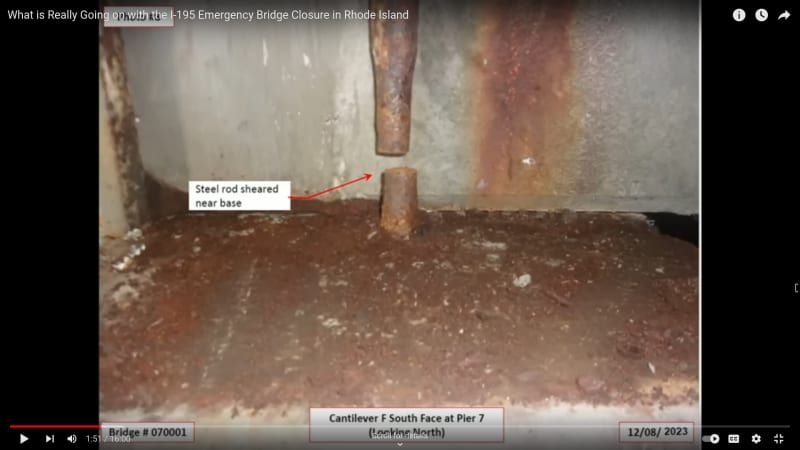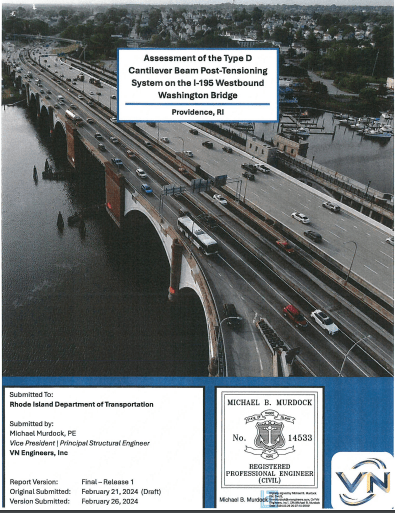Sym P. le
Mechanical
- Jul 9, 2018
- 1,158
"Critical failure" closes I-195 west on Washington Bridge in Providence, Rhode Island - CBS
Casey Jones - Youtube has already done a review - Why does it take three days to close a bridge?

The failed anchor rod is part of the center span. I don't know which pier is involved. There is an east and west span so it will be interesting to learn if deterioration is similar on the alternate span.

Google Street View
Casey Jones - Youtube has already done a review - Why does it take three days to close a bridge?

The failed anchor rod is part of the center span. I don't know which pier is involved. There is an east and west span so it will be interesting to learn if deterioration is similar on the alternate span.

Google Street View

